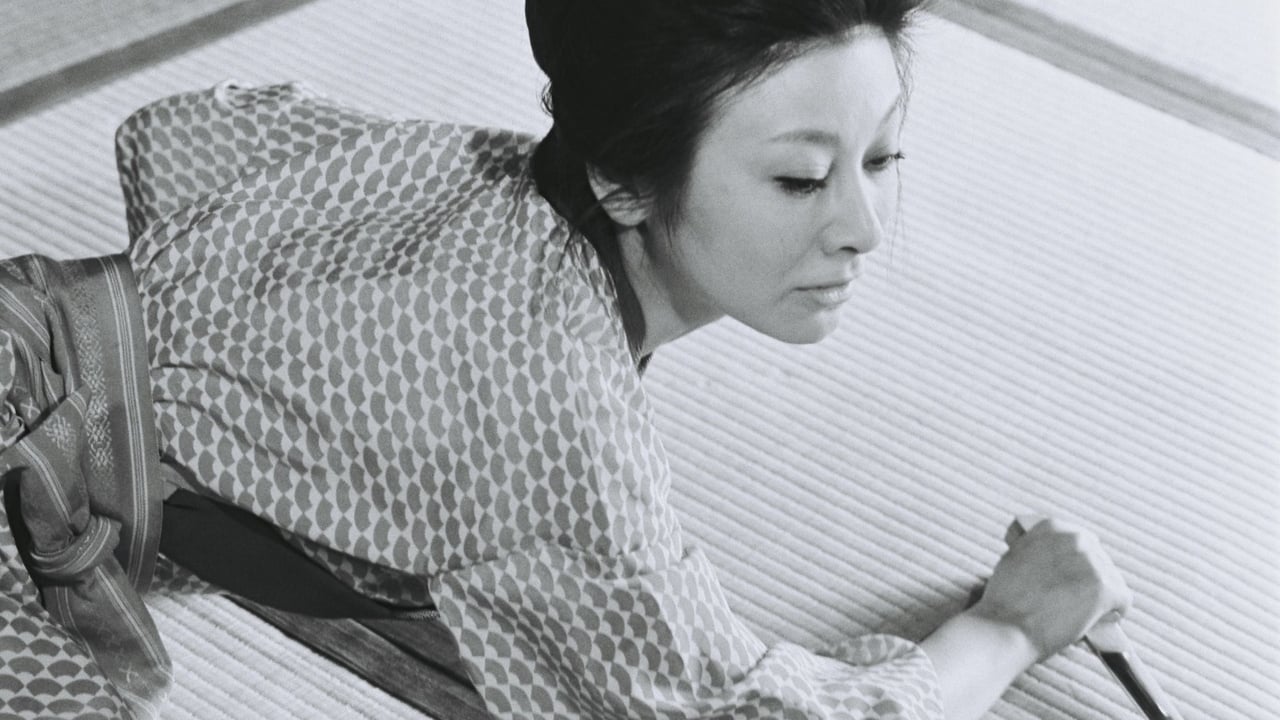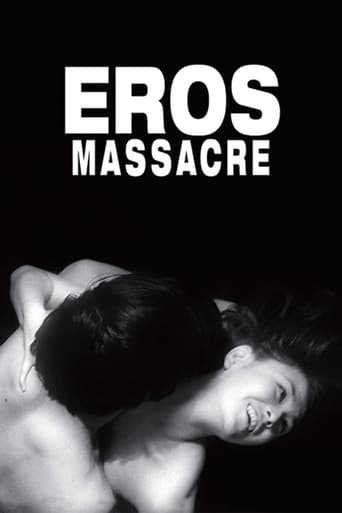

Very well executed
... View MoreIn truth, there is barely enough story here to make a film.
... View MoreThe best films of this genre always show a path and provide a takeaway for being a better person.
... View MoreThe film may be flawed, but its message is not.
... View MoreTwo interwoven stories. The first is a biography of anarchist Sakae Osugi (1885-1923) which follows his relationship with three women in the 1920s. The second centers around two 1960s' students researching Osugi's theories.This film is epic, even in its cut form. Yoshishige Yoshida uses a variety of clever, yet subtle, techniques including the idea of reflection to show the split time frames. Unfortunately, the film's shades of gray are not as stark as they could be.The film is generally considered to be one of the finest film to come out of the Japanese New Wave movement, and sometimes one of the best Japanese films in general. Although relatively unknown in the West, it has gained a small cult following. Thanks to Arrow Video, it can now be seen uncut on Blu-ray. Personally, it is not my cup of tea, but not everything can be.
... View MorePossibly one of the most ambitious works in the entire Japanese New Wave, and certainly Kiju Yoshida's most experimental film (to date). As Yoshida and lead actress Mariko Okada said when they gave their rather extensive introduction to the film, what they wanted to achieve with it was to not just portray the protagonist's history as an event of the past but rather place both his story and struggle and the audience on a same temporal plain. The results might have been a lot more successful for its time of release, but it's still a fascinating effort all along.Essentially, the film treats the work and death of anarchist Sakae Osugi as seen through the eyes of two characters in different timelines, being his long-time lover Noe Ito (Mariko Osada) and a teenage couple living out his "free love" revolution, going over his biography, who discuss and propose different scenarios that may have happened during his life, such as a notorious event when he was stabbed by his wife which is replayed and deconstructed in an almost Rashomon-like fashion.Yoshida mentioned in his introduction that he wanted to structure the film like a dream, in a place where we could flow freely from past to present and back again but in a manner that seemed to make a narrative/structural sense, like how we forget of these lapses while we dream even though they were there. I found it interesting how he made reference to these two timelines as almost separate events joined through a mere montage trick, however, when the actual way he solves this temporal obfuscation is by blending both timelines within the same mise-en-scene, like these characters and stories are merely a panel away from each other. The modern-day characters are surrounded by the locations that Osugi once inhabited, whereas the love triangle developed between Noe, Itsumi (a former lover of Osugi) and the revolutionary occur in locations that are highly artificial and clearly modern, but which also reflect Osugi's ever-growing disdain towards the world he lives in and his conceptions of "free love". It's this quality of juxtaposing temporalities is what gives it a more oneiric feeling to me than the mere disjointed structure with which this story fledges out.Another point of interest which struck me as odd considering the way Yoshida introduced his film is that, whereas he appeared to act very reverently towards the anarchist and how he seemingly was interested in conserving his ideology and not reducing the man to yet another historical figure of whom to make another biopic from, there seemed to be a pretty critical, even satirical tone held throughout to his ideology. There are some sequences within where he freely speaks of his notions of love and government, but these come as firstly apparently shallow, and secondly as little more than a lot of charlatanry. He speaks and writes a lot about these ideals but later says he's unable to defend them publicly because he's constantly surveilled, while on other sequences he seems to completely alter or even outright reject his ideals just to make an argument to defend his love (or lack thereof) to a woman or another. On the other hand, the students doing the investigation are also living in a time where much of Osugi's conceptions of love are coming to fruition, but they do so from the hands of people who seem to do that as a means to clash against the past and little more, and whose musings sound a lot like the classic college lefty monologues which just repeat vapid speeches and ideals against the "system" while drinking a can of Coca-Cola and wearing Levi's jeans and Nike trainers. In a sense, I feel the film is a deliberate case study on the vanity and frivolity in revolution, all the while not taking away merits from the essence of these movements' essential ideals.There is, I believe, one problem that defines just why this film was not the masterpiece that so many of Imamura's films were, and that's a problem with the aesthetic. The visuals in this film, the very complex narrative structure, they're all fascinating elements on their own accord, and it's likely that the film would have never been this wonderful without them, but unlike the work of the aforementioned filmmaker, all of this aesthetic innovation appears as a forced, individual element in the film. You never feel like it is something that blossoms naturally from the development of the themes and ideas, or from the position of the characters themselves. Often you're drawn into just how amazing the form is, to the point that you occasionally forget what is going on. It's like both what is being told and how it's being told exist in two very different through equally mesmerizing plains. Also, the way in which the present is depicted in the film is something that refers a lot back tot he time it was made, and nowadays one can't help but feel like the film is a product of its time as opposed to the timeless products of Imamura, Teshigahara, Shinoda, Kobayashi and the likes.Either way, it's an excellent film all around, certainly the best, the most complex and enlightening work I've seen of Yoshida, a definitive milestone for anyone interested in the 60's Japanese scene.
... View MoreIn the 20's, the anarchist revolutionary Sakae Osugi (Toshiyuki Hosokawa) is financially supported by his wife, the journalist Itsuko Masaoka (Yûko Kusunoki) and spends his time doing nothing but philosophizing about political systems and free love and shagging his lovers Yasuko (Masako Yagi) and the earlier feminist Noe Ito (Mariko Okada). He conveniently defends three principles for a relationship between a man and a woman: they should be financially independent (despite he is not); they should live in different places; and they should be free to have intercourse with other partners.In the present days (1969), the slut twenty year-old student Eiko Sokuta has an active sexual life having sex with different men. She has a freak friend named Wada (Daijiro Harada) that is obsessed for fire and they usually play weird games using a camera while they read about Osugi and Ito. "Erosu Purasu Gyakusatsu" a.k.a. "Eros Plus Massacre" has just been released in Brazil and I immediately bought this DVD for my collection. Unfortunately I can not understand the hype surrounding this film, and I was absolutely disappointed after watching it. The cinematography and framing are wonderful; the angles of the camera are unconventional; the acting is great; however the messy and prolix screenplay ruin the good aspects of this feature. The cult director Yoshishige Yoshida is unable to use an adequate narrative for entwining two parallel stories, one of them based on a true story of a man and three women ahead of the time living a free love among them in times of repression, and an empty couple in the late 60's when the movement of free love is worldwide. Yoshida does not develop the background of the Japanese society in the 20's and limits to the repetitive situations of jealousy and despair of the women in love. After 210 minutes running time (the DVD has intermission), the boring and never-ending story is not totally clear for the viewer. This feature should have been edited and reduced of at least 120 minutes since the situations are very repetitive. Last but not the least, the actress that performs Eiko is very sexy and beautiful, but her name is not listed in IMDb. My vote is four.Title (Brazil): "Eros + Massacre"
... View MoreThe film narrates two parallel stories:one about two deceased lovers(Noe and Osugi) and the other about a super erotic twenty years old female student who meets a gay student and a policeman who accuses her of prostitution.This woman is interested in characters of Noe and Osugi,representatives of feminist and anarchist movements of the early twentieth century Japan,and tries to find out the secret of their life. Osugi is an anarchist who believes in "free love" and keeps a wife and two lovers by the same time.He believes that if the persons are financially independent,live separately and respect the liberty of others(including free sexual relationships),they can live in peace while polygamous,but finally he quites the others for Noe,the one who revives the revolutionist in him. The erotic student and her friend are always playing games,suspending in a desperate emptiness of the time and space.The man has an obsession of burning and the woman wants him to burn her,and in a symbolic scene,they burn together in a fire which the woman has made by her stockings. The film uses a lot of symbolical and expressionistic scenes and lighting to show the meaning of emptiness and sexuality.It is a combination of artistic scenes rather than a classic film with a linear story.we can see the trace of theater and photography in many scenes. It is a different film which remains in mind.
... View More